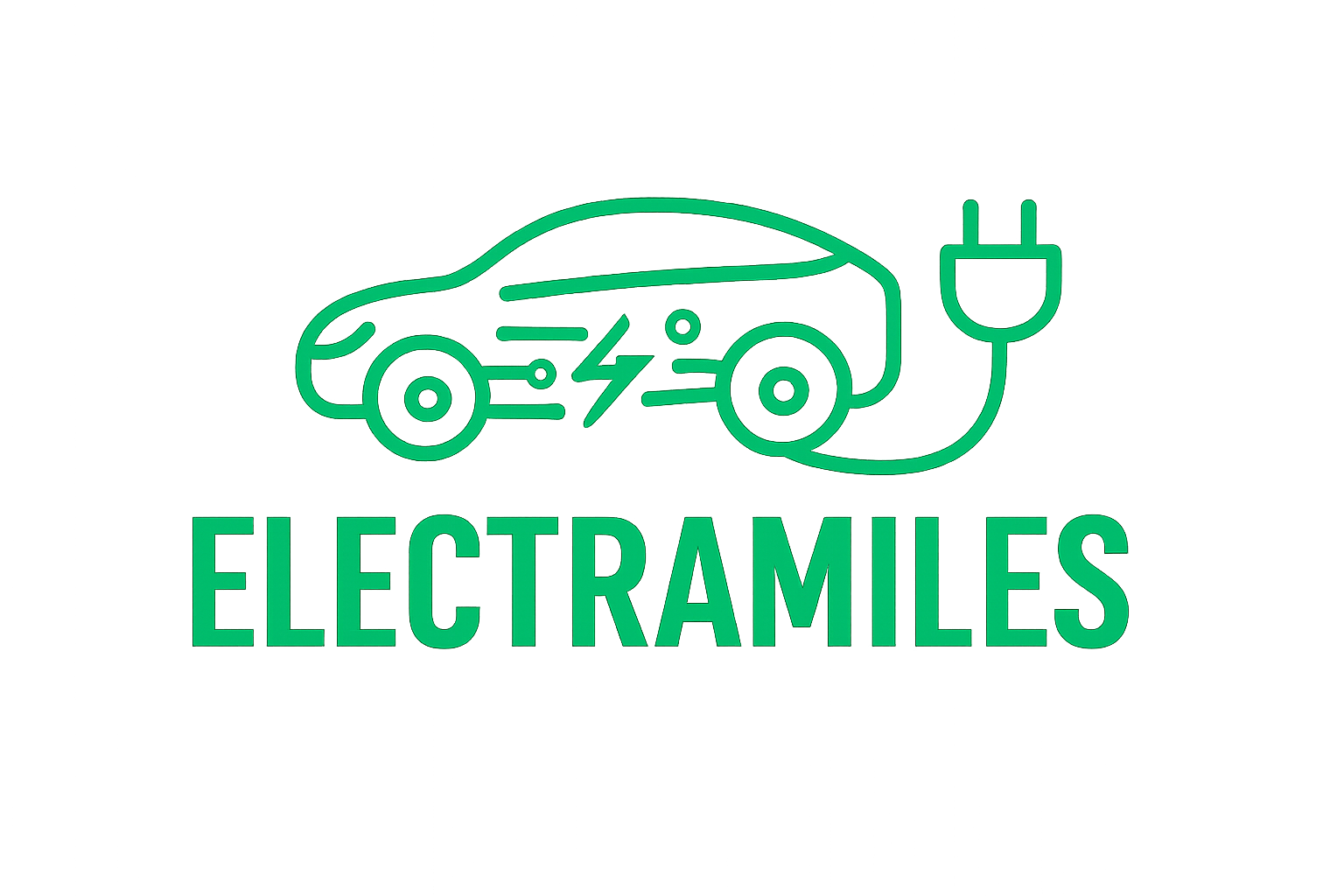Table of Contents
1. Introduction: Why Electric Vehicles Cost Matters in Today’s World

If you look around today, it feels like every conversation about the future of cars leads to electric vehicles (EVs). Whether it’s in the classroom, on social media, or in the news, EVs are presented as the clean, smart, and sustainable solution to transportation.
But there’s one big question that everyone asks before making a switch: What about the cost?
When we talk about electric vehicles cost, we don’t just mean the price tag of the car or scooter. We’re talking about everything — the purchase price, the EV running cost per km, the maintenance expenses, the battery replacement, and even the government subsidies that make them more affordable
. For a student like me, and even for families or professionals, cost plays the biggest role in whether EVs feel like a practical choice.
The world is moving fast toward electric mobility. According to the International Energy Agency (IEA), 14 million electric cars were sold globally in 2023, and this number is expected to rise by 35% in 2024
. India is also catching up, with EV adoption growing in cities like Delhi, Bangalore, and Mumbai. But even with this growth, people hesitate because they’re not sure if EVs are really cheaper in the long run.
Think about it. When you’re about to spend a few lakhs on a vehicle, you want to know:
- Is the electric vehicles cost really higher than petrol or diesel cars?
- How much can I save on fuel if I switch to EVs?
- What happens when the battery gets old?
- Will I get government support to buy one?
- And finally, is it worth it for me as a student or young professional?
This blog will break down the 7 key factors that decide electric vehicles cost and savings. I’ll keep it simple and relatable, with examples, comparisons, and real-world numbers so you can see for yourself whether EVs are worth it.
2. Factor 1: Purchase Price of Electric Vehicles

The first thing that makes people pause before buying an EV is the purchase price. Let’s face it — EVs are still more expensive than petrol and diesel cars when you look at the sticker price.
For example, in India:
- Tata Nexon EV costs around ₹15–18 lakh.
- The petrol version of Tata Nexon costs around ₹8–12 lakh.
That’s almost a difference of ₹5–7 lakh, which is not small at all for a middle-class family or a student.
Why are EVs Expensive Upfront?
The main reason is the battery. The electric vehicles battery is the most expensive component, often making up 30–40% of the total cost. Since battery technology is still developing and raw materials like lithium are costly, EVs naturally have a higher starting price.
Student Perspective
As a student, this feels like the biggest barrier. If I want to buy an EV scooter to commute to college, even that costs more upfront compared to a petrol bike.
For instance, an Ola S1 Pro electric scooter costs around ₹1.4 lakh, while a petrol scooter like Honda Activa costs about ₹80,000. That extra ₹60,000 can feel like a lot when you’re on a student budget.
But here’s the catch — even though the purchase price of electric vehicles is higher, the long-term savings often balance things out. And that’s where the next factor comes in.
3. Factor 2: EV Running Cost per Km
One of the biggest advantages of electric vehicles in India is their low running cost per kilometer compared to petrol or diesel vehicles. For many consumers and fleet operators, this is a key deciding factor when switching to EVs.
1. Electricity vs Fuel Costs
The primary cost of running an electric vehicle is electricity, which is significantly cheaper than petrol or diesel in India. On average:
- Electricity Cost for EVs: ₹7–₹10 per kWh
- Petrol Cost: ₹110–₹120 per litre (varies by city)
- Diesel Cost: ₹100–₹110 per litre
A typical electric car consumes about 15–20 kWh per 100 km, which translates to a running cost of around ₹10–₹15 per km. In comparison, a petrol car with mileage of 15 km/l at ₹115 per litre costs around ₹7–₹8 per km, but electric vehicles still save money over time due to lower maintenance and efficiency.
For two-wheelers, the difference is even more pronounced. A petrol scooter costs around ₹5–₹6 per km, while an electric scooter may cost only ₹1–₹2 per km to run.
2. Maintenance Savings
Electric vehicles in India have fewer moving parts than conventional vehicles. They do not have components like:
- Engine oil
- Timing belts
- Clutch systems
- Gearboxes
This simplicity reduces maintenance costs by 30–50% on average. Over 5 years, this can save thousands of rupees per vehicle.
3. Battery Efficiency and Cost per Km
Battery efficiency affects running cost. A high-efficiency battery ensures that more kilometers are covered per unit of electricity consumed. For example:
- Tata Nexon EV: Around 1.1 km per unit of electricity
- MG ZS EV: Around 1 km per unit of electricity
As battery technology improves and prices drop, the effective running cost per km for EVs in India will continue to decrease.
4. Charging Patterns and Cost Management
The cost per km can vary depending on where and when you charge:
- Home Charging: Generally cheaper, especially if charged at night with lower tariff plans.
- Public Fast Charging: Slightly higher cost per km due to convenience and fast charging fees.
Consumers in India can save money by planning charging during off-peak hours or using renewable energy solutions like rooftop solar panels.
5. Real-World Examples
- Ola Electric Scooter: Costs around ₹1.2 per km to run.
- Tata Nexon EV: Running cost is around ₹2–₹3 per km, compared to ₹6–₹7 for a petrol SUV of similar size.
- MG ZS EV: Around ₹2.5 per km, while diesel counterparts cost ₹6–₹7 per km.
These examples show that electric vehicles in India offer significant savings over their lifetime, making them an attractive option for both individual buyers and commercial fleet operators.
6. Long-Term Financial Benefits
Businesses like delivery and ride-sharing fleets save a large percentage of operational costs by using electric vehicles in India.
Lower running cost per km means faster break-even on initial investment.
EVs are ideal for city commuters who travel 50–100 km daily, as the savings accumulate quickly.
What is EV Running Cost per Km?
It basically means how much it costs you to drive one kilometer. For fuel cars, you calculate it by dividing the cost of petrol/diesel by the mileage. For EVs, it’s electricity cost divided by the distance you get per charge.
Real-World Example (India)
- Petrol car: ₹100 per litre, mileage = 15 km/l → ₹6.6 per km
- EV car: ₹8 per unit electricity, full charge = 30 kWh battery → ~300 km range → ₹0.8 per km
That’s almost 8 times cheaper!
For scooters, it’s even better:
- Petrol scooter: ₹100 per litre, mileage = 50 km/l → ₹2 per km
- EV scooter: ₹8 per unit, 4 kWh battery → ~120 km → ₹0.3 per km
👉 This shows why the EV running cost per km makes such a huge difference.
Student Perspective
For a student who commutes 20 km daily, the yearly fuel cost for a petrol scooter can be ₹15,000–20,000. With an EV scooter, it can be as low as ₹2,500. That’s money saved for books, outings, or even savings for the future.
This is where EVs start making sense. Even if the electric vehicles cost more at the time of purchase, the running cost advantage slowly pays back the difference.
4. Factor 3: Maintenance and Repair Costs

Another big part of electric vehicles cost is maintenance. Traditional cars have engines with hundreds of moving parts. That means oil changes, filters, spark plugs, clutch repairs, and so on. EVs, on the other hand, are much simpler.
Why EVs Are Cheaper to Maintain
- EVs don’t need engine oil.
- Fewer moving parts = fewer chances of breakdown.
- Brake pads last longer due to regenerative braking.
- No clutch, gearbox, or exhaust system to maintain.
Example
A study by Consumer Reports found that EV owners in the U.S. save about 50% on maintenance costs compared to petrol car owners.
Student Perspective
For young people like us, this is a huge relief. Imagine not having to go to the mechanic every few months for small issues. For scooters, this difference is even bigger because electric scooters have almost no maintenance compared to petrol ones.
So when we calculate the electric vehicles cost, lower maintenance is a big plus.
5. Factor 4–7: Hidden and Long-Term Costs That Affect Savings
Now let’s talk about the less obvious but equally important factors that decide the total electric vehicles cost.
Battery Replacement Cost
The battery is the heart of any electric vehicle in India, and its cost is one of the most important considerations for EV owners. While electric vehicles have lower running costs and maintenance, battery replacement is a major expense that can affect the total cost of ownership.
1. Importance of Battery in EVs
Batteries in electric vehicles store the energy required for propulsion. Most modern EVs in India use lithium-ion batteries due to their high energy density, lighter weight, and longer lifespan compared to older lead-acid batteries.
Battery performance directly affects:
- Driving range per charge
- Charging time
- Vehicle efficiency and running cost
Thus, the battery replacement cost is a key factor in evaluating the long-term affordability of electric vehicles in India.
2. Average Battery Life
Modern EV batteries typically last between 8–10 years or 1,50,000–2,00,000 km, depending on usage, charging habits, and climate conditions. Some premium EVs offer warranties for 8 years or up to 1,60,000 km on the battery, which reduces the immediate financial risk for owners.
3. Battery Replacement Costs in India
Battery prices in India vary depending on:
- Vehicle type (two-wheeler, three-wheeler, or four-wheeler)
- Battery capacity (kWh)
- Brand and technology
Approximate replacement costs:
- Electric Scooters / Two-Wheelers: ₹25,000–₹40,000
- Compact Electric Cars (e.g., Tata Tigor EV): ₹3–₹4 lakh
- SUVs / Premium Electric Cars (e.g., MG ZS EV, Tata Nexon EV): ₹5–7 lakh
These costs are decreasing gradually due to technological improvements and increased local manufacturing of lithium-ion batteries in India.
4. Factors Affecting Battery Replacement Cost
- Battery Size and Capacity: Larger batteries with higher kWh ratings cost more to replace but provide longer range.
- Battery Chemistry: Advanced lithium-ion variants (NMC, LFP) may last longer and have different replacement costs.
- Warranty Coverage: Many EVs in India come with battery warranties of 8 years, so early replacements may not be needed.
- Market Price Trends: With India investing in local battery production and R&D, prices are expected to fall over the next 5–10 years.
5. Cost vs Benefits
Although the replacement cost may seem high, it should be weighed against the savings in running cost per km and lower maintenance costs of electric vehicles in India:
- Over 8–10 years, EV owners save significant money on fuel and servicing.
- Batteries are gradually becoming cheaper and more efficient, extending the life of the vehicle.
- Technological advancements like solid-state batteries promise longer lifespans and lower replacement costs in the future.
6. Real-World Example
- Tata Nexon EV: Battery replacement around ₹5–6 lakh, warranty covers 8 years.
- MG ZS EV: Battery replacement ₹6–7 lakh, warranty covers 8 years.
- Ola S1 Electric Scooter: Battery replacement ₹30,000–₹35,000, with warranty up to 3 years.
Even with the replacement cost considered, electric vehicles in India remain more cost-effective over a 10-year period than petrol or diesel vehicles due to lower running and maintenance costs.
Charging Infrastructure Cost
- Charging at home is cheap but setting up a home charger may cost ₹50,000–₹1 lakh.
- Public charging can sometimes be more expensive than home charging.
Government Incentives & Subsidies
- In India, schemes like FAME-II offer subsidies up to ₹1.5 lakh.
- Tax benefits are also given for EV loans.
- These incentives directly reduce the electric vehicles cost for buyers.
Resale Value of EVs
- Petrol cars lose value quickly, but their resale market is stable.
- EV resale is still developing, but as adoption grows, resale value is improving.
👉 Together, these hidden costs and benefits can make or break your EV experience.
6. Conclusion: Are Electric Vehicles Worth the Cost?

So after looking at these 7 key factors, what’s the verdict?
Yes, the electric vehicles cost is higher when you first buy one. But when you add in the low running cost per km, reduced maintenance, government subsidies, and long-term savings, EVs often turn out to be cheaper over their lifetime.
For students and young professionals, EVs may still feel expensive today, but within the next 5–10 years, as battery prices drop and charging infrastructure improves, EVs will become the smarter and more economical choice.
If we think not just about money but also about the environment, EVs are clearly the way forward. For our generation, choosing EVs means choosing savings, sustainability, and smart living.
FAQs About Electric Vehicles Cost
1. Why is the electric vehicles cost higher than petrol cars?
The main reason electric vehicles cost more upfront is because of the expensive battery packs, which make up 30–40% of the vehicle price. However, with government subsidies and falling battery prices, the gap is closing fast.
2. Does the EV running cost per km really make a difference?
Yes, the EV running cost per km is much lower than petrol or diesel cars. While a petrol car may cost ₹6–7 per km, an EV usually costs less than ₹1 per km, saving thousands every year.
3. How long does it take for the electric vehicles cost to break even?
On average, EVs take about 3–5 years to recover the higher purchase price through lower running and maintenance costs. For students or daily commuters, the break-even can come even sooner.
4. Is maintaining an EV cheaper than a petrol car?
Yes, EVs are far cheaper to maintain. With fewer moving parts, no engine oil, and regenerative braking, the maintenance cost of EVs is almost half compared to traditional cars, reducing the overall electric vehicles cost.
5. What about the cost of replacing an EV battery?
Battery replacement is one of the biggest concerns in electric vehicles cost. In India, it can cost ₹3–6 lakh, but most EV manufacturers offer 8-year warranties, so you may not need to replace the battery during ownership.
6. Do government incentives reduce electric vehicles cost?
Absolutely. Schemes like FAME-II in India and tax credits in countries like the U.S. directly reduce electric vehicles cost by ₹1–2 lakh or more, making them more affordable.
7. Is charging at home cheaper than public charging?
Yes, charging at home is the most cost-effective way and lowers the EV running cost per km. Public fast charging is more expensive but still cheaper than petrol or diesel fueling.
8. How does electric vehicles cost compare globally?
In countries like Norway and China, EVs are often cheaper than petrol cars due to subsidies and local manufacturing. In India and the U.S., electric vehicles cost more upfront but offer long-term savings.
9. Will the resale value of EVs improve in the future?
Yes. Initially, resale values were low, but as adoption increases, electric vehicles cost recovery through resale will get better. Cars like Tata Nexon EV already retain strong resale prices.
10. Are electric vehicles worth the cost for students and young professionals?
Yes. While the upfront electric vehicles cost may feel high, the savings from low EV running cost per km, reduced maintenance, and subsidies make them a smart choice for students and young professionals looking for affordable mobility.
